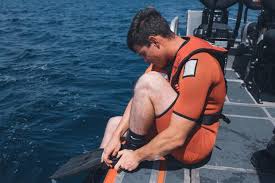The vastness of the sea has always captivated human imagination, but it also poses significant risks. From turbulent storms to accidents at sea, maritime environments can turn treacherous in an instant. To mitigate these dangers, rigorous rescue standards have been developed to protect lives and ensure safe maritime operations. This article explores the relationship between the sea’s unpredictable nature and the critical role of rescue standards in maintaining safety.
The Sea: A Realm of Beauty and Danger
The ocean covers over 70% of the Earth’s surface and supports countless ecosystems, industries, and communities. It is a source of inspiration and sustenance, but its unpredictable nature can lead to perilous situations. Sudden weather changes, high waves, and hidden currents pose constant challenges for those venturing into its depths, whether for work or leisure.
While advances in technology have improved our ability to navigate and predict sea conditions, the inherent risks of maritime environments remain. This is where rescue standards become indispensable.
Understanding Rescue Standards at Sea
Rescue standards are a set of guidelines, protocols, and practices designed to ensure effective response during maritime emergencies. These standards cover everything from vessel safety requirements to emergency evacuation procedures and coordinated search-and-rescue (SAR) operations.
Key international frameworks, such as the International Convention on Maritime Search and Rescue (SAR Convention) and the Safety of Life at Sea (SOLAS) Convention, form the backbone of global rescue standards. These conventions mandate that vessels carry essential safety equipment, maintain communication capabilities, and adhere to strict operational guidelines.
The Role of Rescue Equipment and Training
Rescue operations at sea depend heavily on specialized equipment and well-trained personnel. Key elements include:
- Lifeboats and Life Rafts: Designed to provide temporary shelter and flotation for individuals in distress.
- Personal Protective Equipment (PPE): Life jackets, immersion suits, and thermal blankets safeguard individuals against drowning and hypothermia.
- Rescue Vessels and Aircraft: Fast-response boats, helicopters, and drones are integral to locating and rescuing individuals quickly.
- Communication Systems: Radios, EPIRBs (Emergency Position Indicating Radio Beacons), and satellite systems ensure efficient coordination and signaling in emergencies.
Equally important is the training of rescue personnel. Maritime professionals undergo rigorous drills, including fire fighting, evacuation procedures, and man-overboard recovery. Simulated exercises help ensure they can respond effectively to real-life scenarios.
Search-and-Rescue Operations: Coordination and Challenges
Search-and-rescue (SAR) operations are complex endeavors requiring seamless coordination among multiple entities, including coast guards, navies, and international organizations. SAR operations typically involve:
- Distress Signal Reception: Locating the source of a distress signal through radio communication or satellite tracking.
- Deployment of Resources: Mobilizing rescue vessels, aircraft, and medical teams.
- Search Procedures: Conducting systematic searches using radar, sonar, and visual spotting techniques.
- Rescue and Recovery: Safely retrieving individuals and providing medical attention as needed.
Challenges in SAR operations often include adverse weather conditions, limited visibility, and the vastness of the search area. These factors necessitate precise planning and advanced technologies to improve success rates.
The Importance of Preventive Measures
While rescue standards are vital, preventing maritime accidents in the first place is equally critical. Preventive measures include:
- Routine Vessel Maintenance: Ensuring ships meet safety standards and are seaworthy.
- Weather Monitoring: Utilizing meteorological data to avoid hazardous conditions.
- Maritime Traffic Management: Reducing collision risks through controlled shipping lanes and traffic separation schemes.
- Crew Training and Awareness: Educating seafarers on safety protocols and emergency procedures.
Investments in these preventive strategies significantly reduce the likelihood of accidents and enhance overall maritime safety.
Adapting Rescue Standards to Modern Challenges
Climate change and advancements in maritime technology are reshaping the way rescue standards are implemented. Rising sea levels and more frequent severe weather events increase the risk of maritime emergencies. To address these challenges, rescue agencies are integrating advanced technologies, such as autonomous drones and AI-based predictive tools, into their operations.
Moreover, the growing diversity of sea activities, including offshore energy production and oceanic tourism, calls for tailored rescue protocols to address the unique risks associated with each sector.
A Shared Responsibility for Safety
Ensuring safety at sea is a collective effort involving governments, maritime organizations, and individuals. Coastal nations bear the responsibility of maintaining rescue infrastructure, while international collaboration ensures that rescue efforts transcend national boundaries.
At an individual level, adherence to safety practices, such as wearing life jackets and checking weather conditions before setting sail, can significantly reduce risks.
Resilience Amid the Waves
The sea’s majesty comes with inherent risks, making rescue standards essential for preserving lives. By adhering to these standards, we ensure that maritime environments remain a place of exploration, trade, and adventure while safeguarding those who traverse them. As technology evolves and new challenges arise, our commitment to upholding and improving rescue standards must remain steadfast, fostering resilience amid the waves.
